Crew of NASA’s Earthbound Simulated Mars Habitat Emerges After a Year
In a significant milestone for space exploration, four dedicated volunteers have completed a year-long mission inside NASA’s first simulated Mars environment, emerging from the Mars Dune Alpha habitat at the Johnson Space Center in Houston, Texas. This pioneering mission is part of NASA’s Crew Health and Performance Exploration Analog (CHAPEA) project, designed to simulate the conditions of a Mars mission and gather crucial data for future human expeditions to the Red Planet.
The mission commenced on June 25, 2023, when Kelly Haston, Anca Selariu, Ross Brockwell, and Nathan Jones entered the 3D-printed habitat. Over the course of 378 days, the crew lived and worked within the 1,700 square foot Mars Dune Alpha, a facility designed to replicate the challenges and conditions of a real Mars mission. This included conducting “Marswalks” in a simulated Martian landscape, growing and harvesting vegetables, and maintaining the habitat and their equipment.
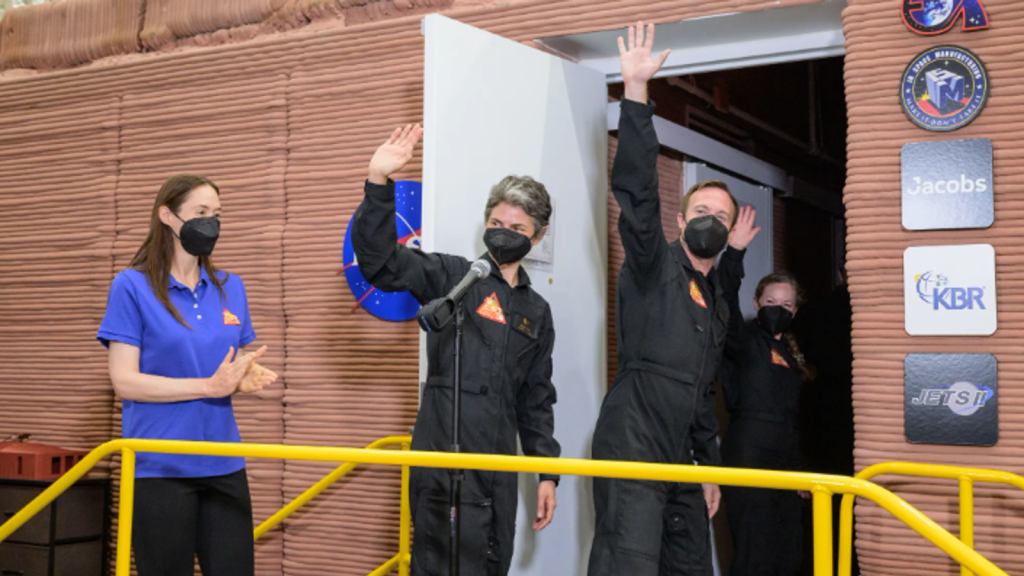
The primary goal of the CHAPEA mission is to understand how isolation, limited resources, and communication delays impact human health and performance. The habitat simulated a 22-minute communication delay with Earth, mimicking the real-time delay astronauts would experience on Mars. This added a layer of complexity to their daily operations and provided valuable data on how future Mars crews might cope with such challenges.
Key Insights and Achievements

Living Sustainably
One of the significant achievements of the mission was demonstrating sustainable living practices. Ross Brockwell, the crew’s flight engineer, emphasized the importance of utilizing resources efficiently. “We must utilize resources no faster than they can be replenished and produce waste no faster than it can be processed back into resources,” Brockwell said. This principle is crucial not only for future Mars missions but also for sustainable living on Earth.
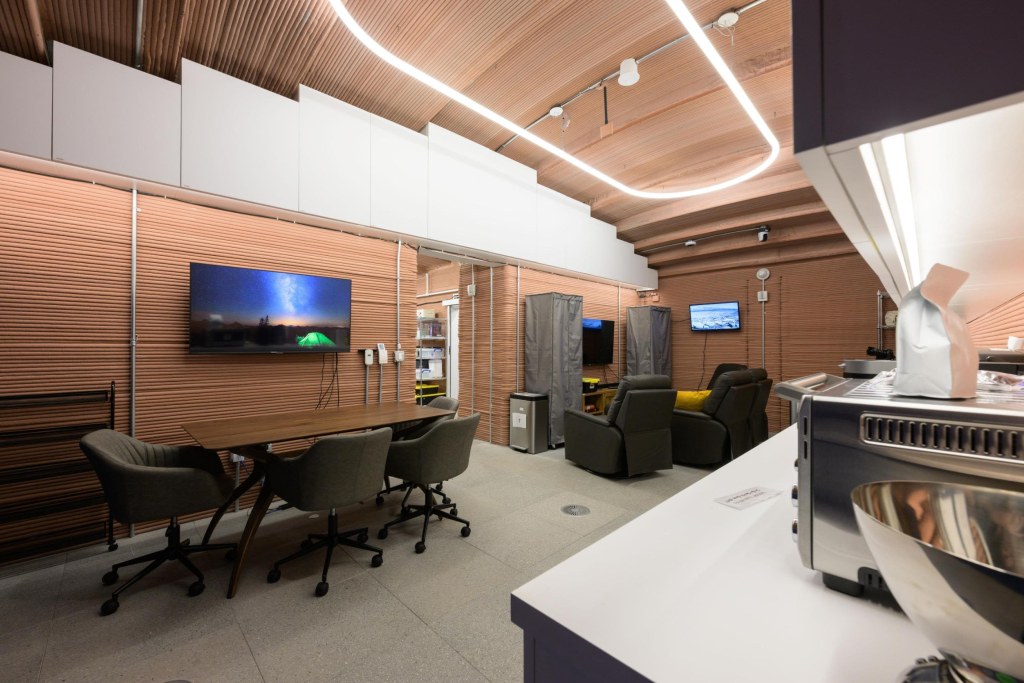
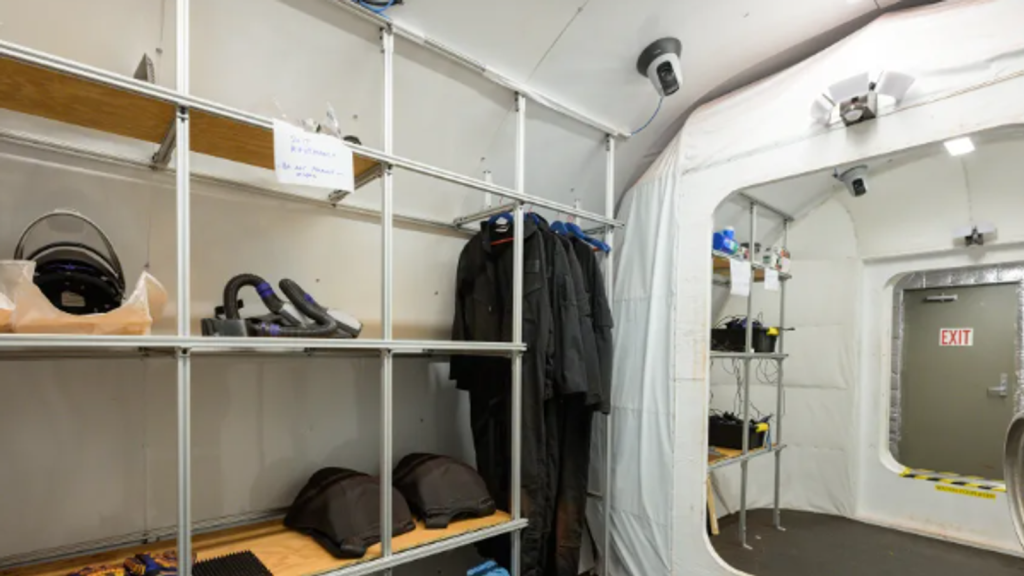
Nutritional Studies
Steve Koerner, deputy director of Johnson Space Center, highlighted that much of the experimentation focused on nutrition and its impact on performance. The crew’s diet and its effects on their health and productivity were closely monitored, providing insights that will help prepare for long-duration space missions.

Psychological and Behavioral Health
The mission also provided valuable data on the psychological and behavioral health of the crew. Nathan Jones, the mission’s medical officer, reflected on the emotional challenges of confinement and isolation. “Our 378 days in confinement went by quickly,” he said, acknowledging the psychological resilience required for such missions.
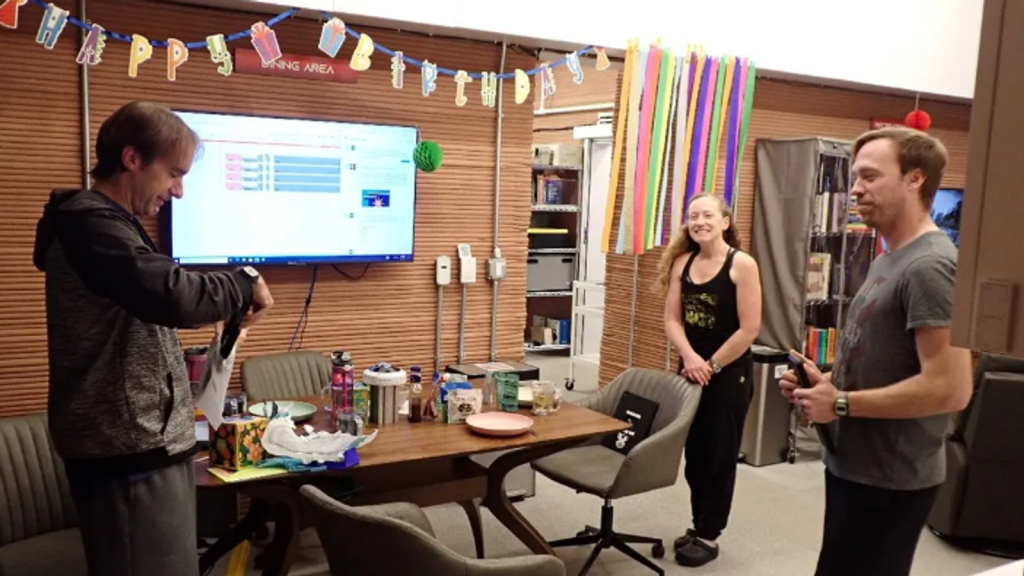
Reflections from the Crew
As the crew emerged from the habitat, they expressed gratitude and shared their reflections on the mission. Anca Selariu, the mission’s science officer, spoke passionately about the significance of space exploration. “Why go to Mars? Because it’s possible,” she said. “Because space can unite and bring out the best in us.”
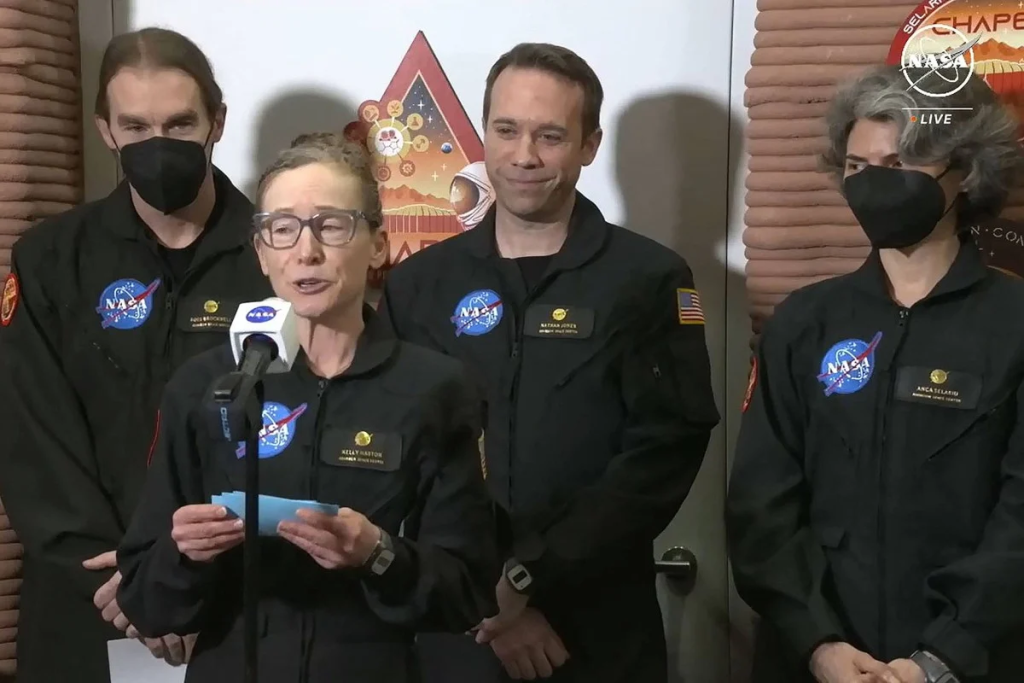
Kelly Haston, the mission commander, and Nathan Jones both expressed the emotional impact of the mission, particularly the joy of reuniting with loved ones. The mission’s success underscores the dedication and resilience required for future Mars missions.
Mars: The Ultimate Goal And The First Frontier
NASA plans two additional CHAPEA missions to continue gathering data on human health and performance in Mars-like conditions. These missions will build on the findings from the first mission and further refine the strategies for future Mars expeditions.
The CHAPEA missions are part of a broader strategy under NASA’s Artemis program, which aims to return humans to the Moon and use it as a stepping stone for Mars exploration. “Mars is our goal,” Koerner stated, underscoring America’s commitment to leading global space exploration efforts.
The successful completion of NASA’s first year-long simulated Mars mission marks a significant step forward in preparing for human exploration of Mars. The data and insights gained from this mission will be invaluable in planning and executing future missions to the Red Planet. As NASA continues to push the boundaries of space exploration, the lessons learned from CHAPEA will help ensure the success and safety of astronauts on their journey to Mars.


